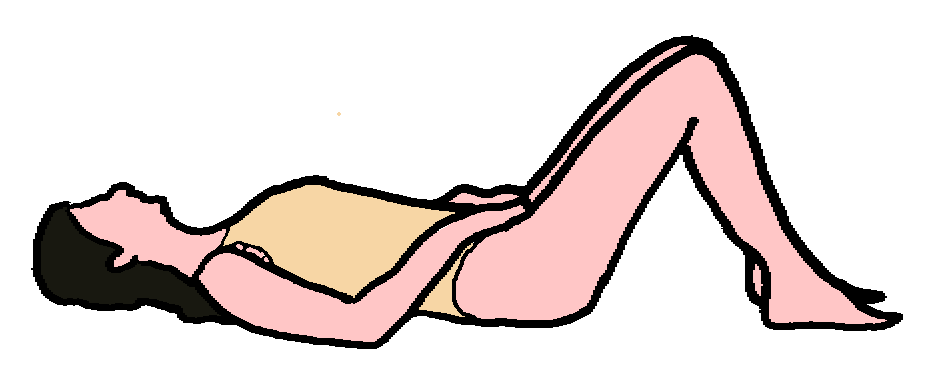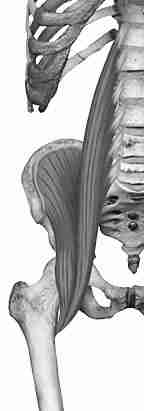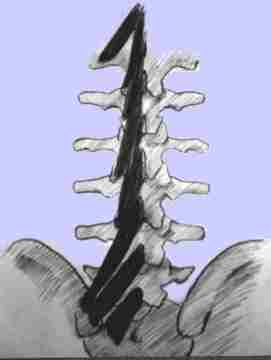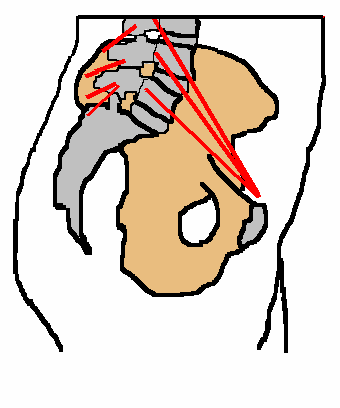|
|
|---|
Assessment:-
- Is your back pain worsened by lying "prone" (see diagram below)?

- Is your back pain worsen by lying "supine" (see diagram below)? -

- Is your pain reduced when your legs are brought up so that you are lying
"semi-supine" (see diagram below)? -

If you are answering yes to these questions, your likely cause of pain is a
"tight weak" (i.e. "tight" at rest & when stretched, & "weak" in terms of its ability to pull against a load)
Psoas muscle, that is pulling the lumbar vertebrae forward & compressing them together.
Please study the following diagrams and discussion for information about the "tight weak" Psoas muscle...
|
Diagram 1:
The Psoas muscle runs from the lumbar spine to the thigh bone.
It becomes short & tight in response to low back pain.

|
Diagram 2:
(Spine & pelvis from rear):
The lower segments of the Multifidis muscle run from the lumbar spine down to the pelvis &
sacrum. It becomes weak in response to low back pain.

|
 |
Diagram 3: Side view of pelvis and lower lumbar spine: The red lines represent the directions of pull of
the Multifidis muscle (Left hand side), and the Psoas muscle (right hand side). |
|
|
Discussion: The "Tight Weak" Psoas Muscle :-
When you fully straighten your hip joint, your over-tight psoas muscle pulls your lower lumbar vertebrae
forward (that's called "anterior glide"), & together (that's called "compression").
The result is that lumbar discs & facet joints are put under strain & the sciatic nerve roots are pinched.
The solution is three fold:-
- Teach the psoas muscle to relax instead of attempting to brace the lower spine.
- Reactivate the weakened multifidis, so that it can counter the forward force of the psoas.
- Reactivate muscles that tension the ligaments that support
the lower spine (Latissimus dorsi & Lower trapezius from above, Gluteus
max & medius from below, Transverse & oblique abdominals from the side).
|
Traditional Pilates is good for rebuilding the Multifidis and abdominal muscles.
The Back Maintenance Manual takes this further with "Evolved Pilates" exercises that help
to relax the tight psoas & rebuild the weak Gluteus maximus & other muscles.
|
|
Futher reading:
(1) "The Gluteus maximus can stabilize your back!"
(2) Trigger Point Massage of the Psoas provides a powerful
extra tool in management of a "tight and weak" psoas muscle. Ref:
Triggerpoint Therapy Workbook -
© Bruce Thomson, EasyVigour Project
|





